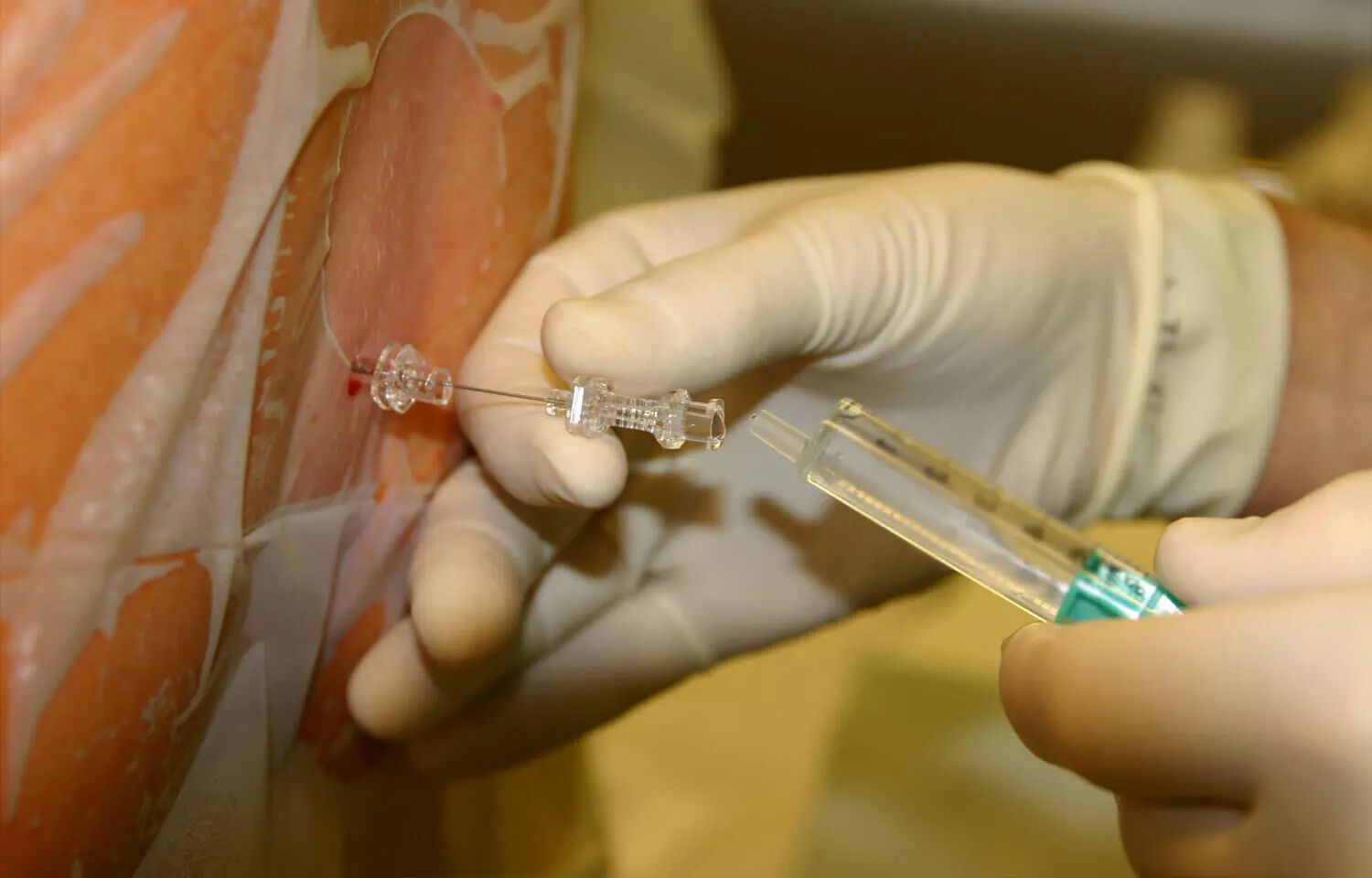- Home
- Medical news & Guidelines
- Anesthesiology
- Cardiology and CTVS
- Critical Care
- Dentistry
- Dermatology
- Diabetes and Endocrinology
- ENT
- Gastroenterology
- Medicine
- Nephrology
- Neurology
- Obstretics-Gynaecology
- Oncology
- Ophthalmology
- Orthopaedics
- Pediatrics-Neonatology
- Psychiatry
- Pulmonology
- Radiology
- Surgery
- Urology
- Laboratory Medicine
- Diet
- Nursing
- Paramedical
- Physiotherapy
- Health news
- Fact Check
- Bone Health Fact Check
- Brain Health Fact Check
- Cancer Related Fact Check
- Child Care Fact Check
- Dental and oral health fact check
- Diabetes and metabolic health fact check
- Diet and Nutrition Fact Check
- Eye and ENT Care Fact Check
- Fitness fact check
- Gut health fact check
- Heart health fact check
- Kidney health fact check
- Medical education fact check
- Men's health fact check
- Respiratory fact check
- Skin and hair care fact check
- Vaccine and Immunization fact check
- Women's health fact check
- AYUSH
- State News
- Andaman and Nicobar Islands
- Andhra Pradesh
- Arunachal Pradesh
- Assam
- Bihar
- Chandigarh
- Chattisgarh
- Dadra and Nagar Haveli
- Daman and Diu
- Delhi
- Goa
- Gujarat
- Haryana
- Himachal Pradesh
- Jammu & Kashmir
- Jharkhand
- Karnataka
- Kerala
- Ladakh
- Lakshadweep
- Madhya Pradesh
- Maharashtra
- Manipur
- Meghalaya
- Mizoram
- Nagaland
- Odisha
- Puducherry
- Punjab
- Rajasthan
- Sikkim
- Tamil Nadu
- Telangana
- Tripura
- Uttar Pradesh
- Uttrakhand
- West Bengal
- Medical Education
- Industry
Study Evaluates Propofol Wastage Reduction Strategies in Total Intravenous Anesthesia

Tumakuru’s Rising C-Sections Spark Ministerial Outrage
A recent study found that syringe pump induction of propofol significantly reduced the wastage compared to manual induction across patient groups. The study results were published in the British Journal of Anesthesia.
Climate change is a serious public health issue and hence new strategies have to be developed for sustainable healthcare practices. Among the hospitals, Anesthesia and intensive care are noted for high resource and energy consumption contributing heavily to hospital waste. Hence, Associations like the Association of Anaesthetists of Great Britain and Ireland and the German Society for Anaesthesiology have recommended reducing carbon dioxide emissions from hospitals. Medications like propofol which are commonly used anesthetic agents significantly contribute to medication waste from the hospitals. Total intravenous anesthesia (TIVA) uses both induction and maintenance of anesthesia by using propofol. Maintenance of TIVA is commonly achieved using an automated syringe pump, whereas induction is achieved either manually using a separate syringe or by programming a bolus through the syringe pump. Hence, current protocols suggest using smaller vials and prediction tools to reduce the wastage of propofol in hospital settings. As there is limited data on effective methods of using these, researchers conducted a retrospective study to investigate the amount of propofol wastage using either of the induction methods.
A retrospective analysis was carried out by including adult patients (≥18 years) undergoing TIVA at the University Hospital Bonn. Data was collected on the complete anesthetic and waste documentation from both paper and electronic anesthesia records by recording anesthetic duration, patient characteristics, substance use, and propofol administered. Induction was done with a separate syringe for manual induction or by a bolus programmed on an automated syringe pump for induction and maintenance. The primary endpoint was total propofol waste during surgery including the unused amounts in the syringe and pump.
Results:
- Syringe pump induction was associated with 32.8% less waste of propofol (P<0.001) than manual method.
- This reduction was most pronounced in procedures lasting 20–60 min (up to 46.9% less in procedures lasting 20–40 min, P<0.001) and 80–120 min (up to 48.8% less in procedures lasting 100–120 min, P=0.003).
- Variables like biological sex, age, weight, BMI, or ASA physical status did not affect the amount of wastage.
- Syringe pump induction was consistently associated with less waste, except in patients with obesity.
- Patients with active substance use had 27.6% more waste with manual induction (P=0.031) but not with syringe pump induction.
- In patients with and without active substance use, syringe pump induction resulted in less waste (substance use: 48.7% less, P=0.0015; without substance use: 22.7% less, P=0.0045).
Thus, the study concluded that Syringe pump induction reduced propofol waste during TIVA, regardless of patient characteristics. This method could be a more sustainable, cost-effective method considering the impact of manual induction on the environment.
Further reading: Windler F, Coburn M, Bette B, Fingerhut D, Jacobi A, Kruse P. Effects of manual and syringe pump induction of total intravenous anaesthesia on propofol waste: a single-centre retrospective analysis. Br J Anaesth. Published online October 28, 2024. doi:10.1016/j.bja.2024.10.002
BDS, MDS
Dr.Niharika Harsha B (BDS,MDS) completed her BDS from Govt Dental College, Hyderabad and MDS from Dr.NTR University of health sciences(Now Kaloji Rao University). She has 4 years of private dental practice and worked for 2 years as Consultant Oral Radiologist at a Dental Imaging Centre in Hyderabad. She worked as Research Assistant and scientific writer in the development of Oral Anti cancer screening device with her seniors. She has a deep intriguing wish in writing highly engaging, captivating and informative medical content for a wider audience. She can be contacted at editorial@medicaldialogues.in.
Dr Kamal Kant Kohli-MBBS, DTCD- a chest specialist with more than 30 years of practice and a flair for writing clinical articles, Dr Kamal Kant Kohli joined Medical Dialogues as a Chief Editor of Medical News. Besides writing articles, as an editor, he proofreads and verifies all the medical content published on Medical Dialogues including those coming from journals, studies,medical conferences,guidelines etc. Email: drkohli@medicaldialogues.in. Contact no. 011-43720751




